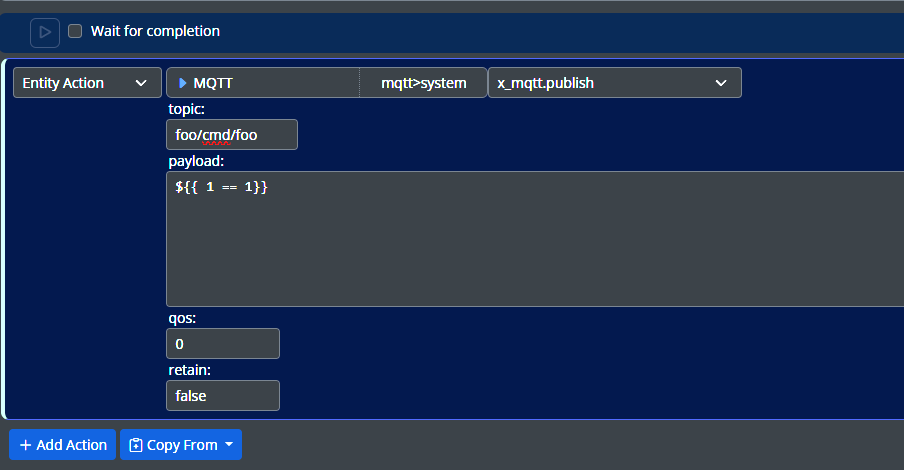Hey @toggledbits.
I found a strange bug while sending boolean MQTT payloads in actions. Latest MQTT/Reactor builds.
Basically, if I send a true/false, it gets logged but it's not sent:
[latest-25328]2025-12-31T11:36:23.958Z <MQTTController:INFO> MQTTController#mqtt x_mqtt.publish publishing foo/cmd/foo payload false
If I change to ${{ str(1 == 1) }}, it goes thru. No apparent errors in logs.



